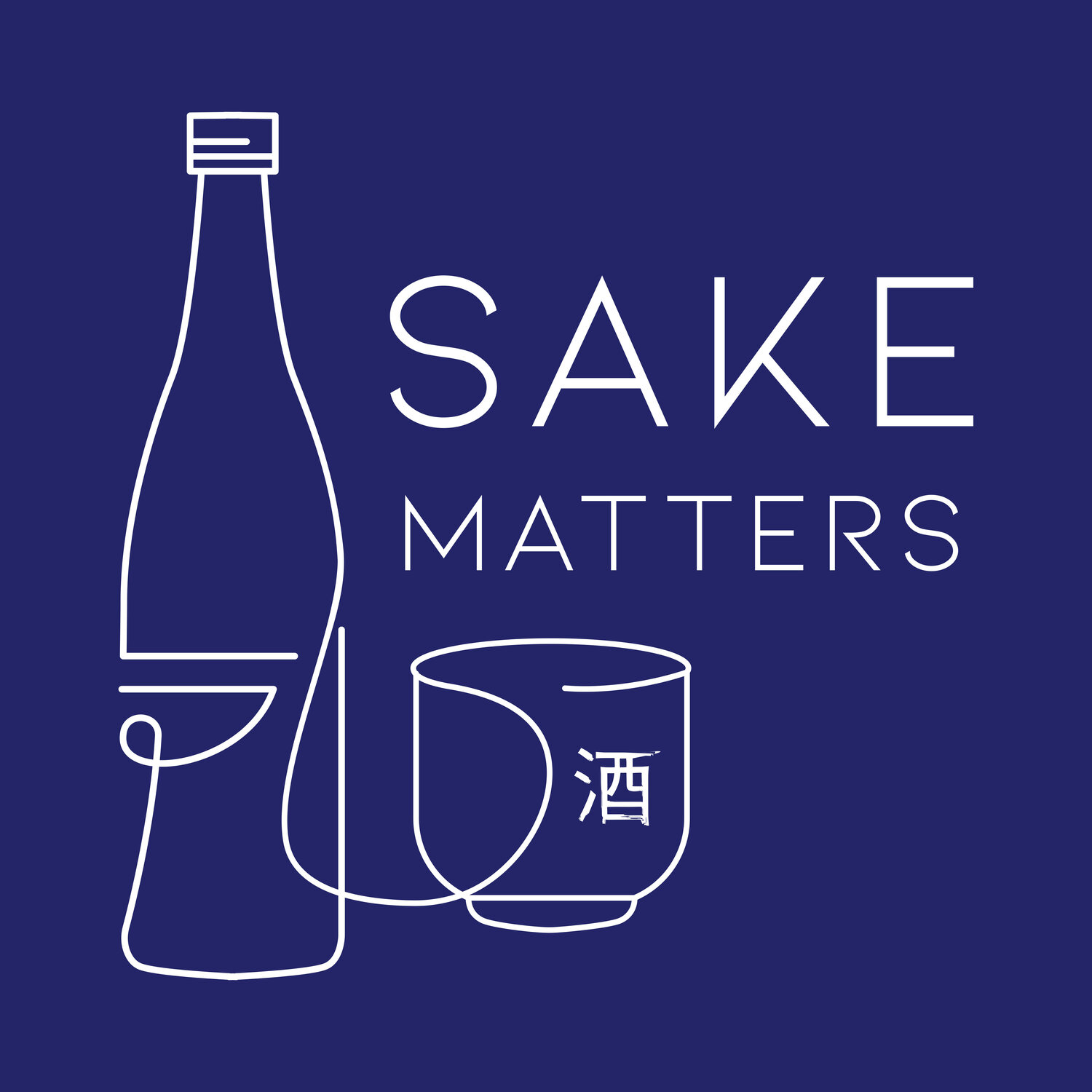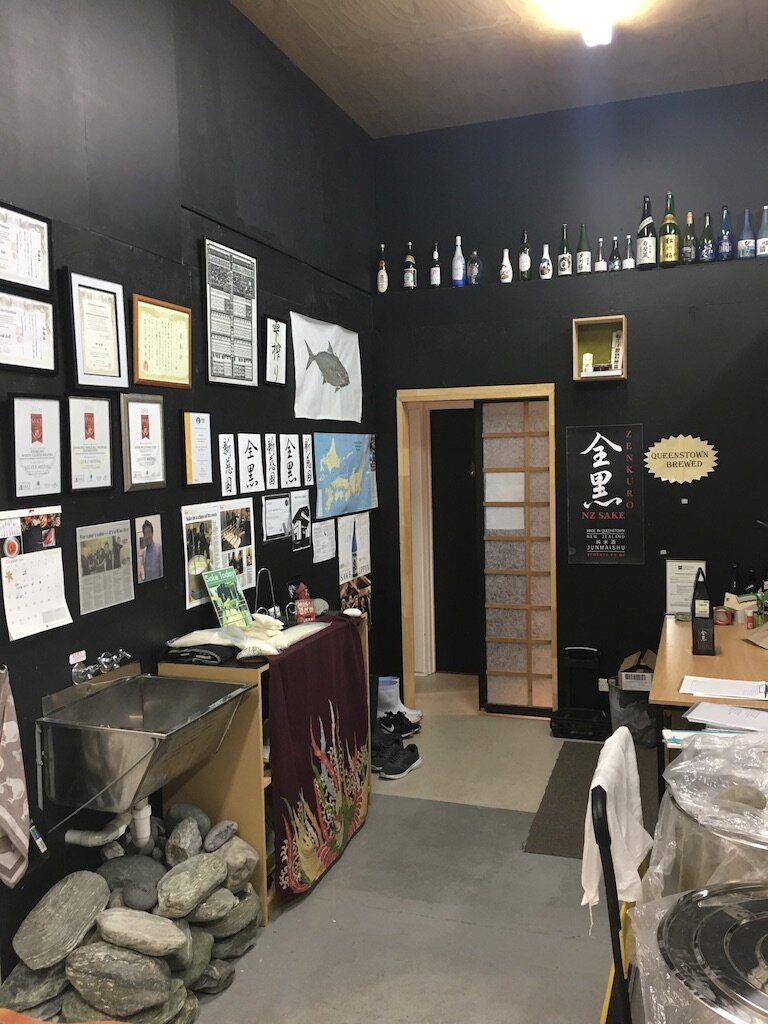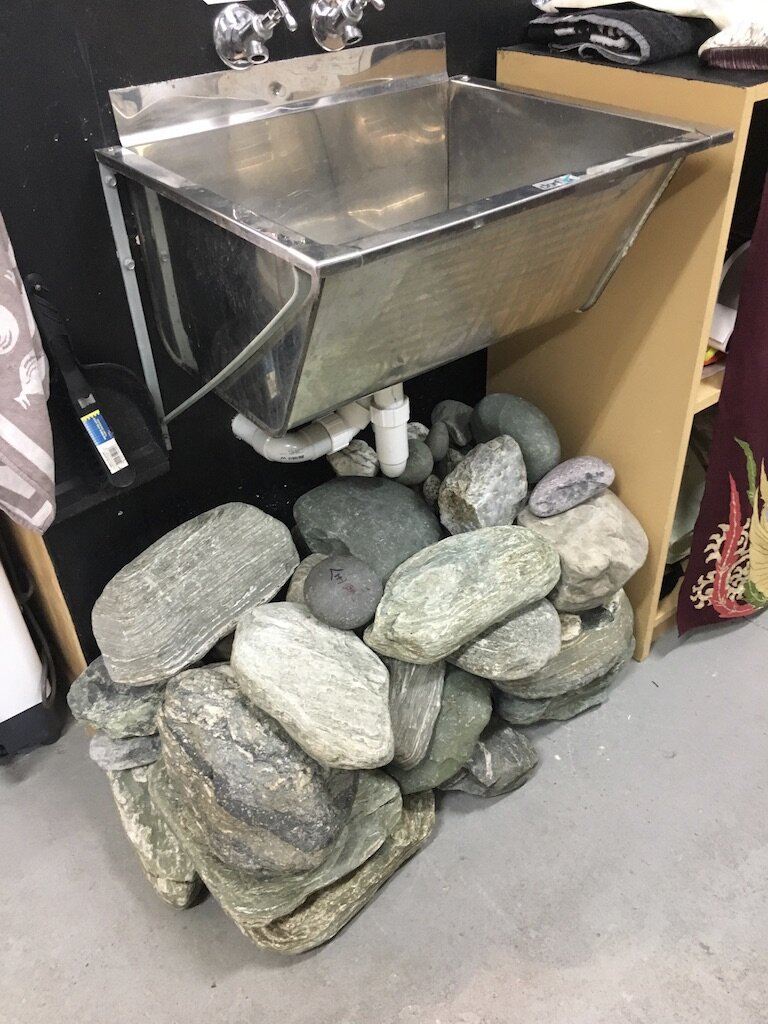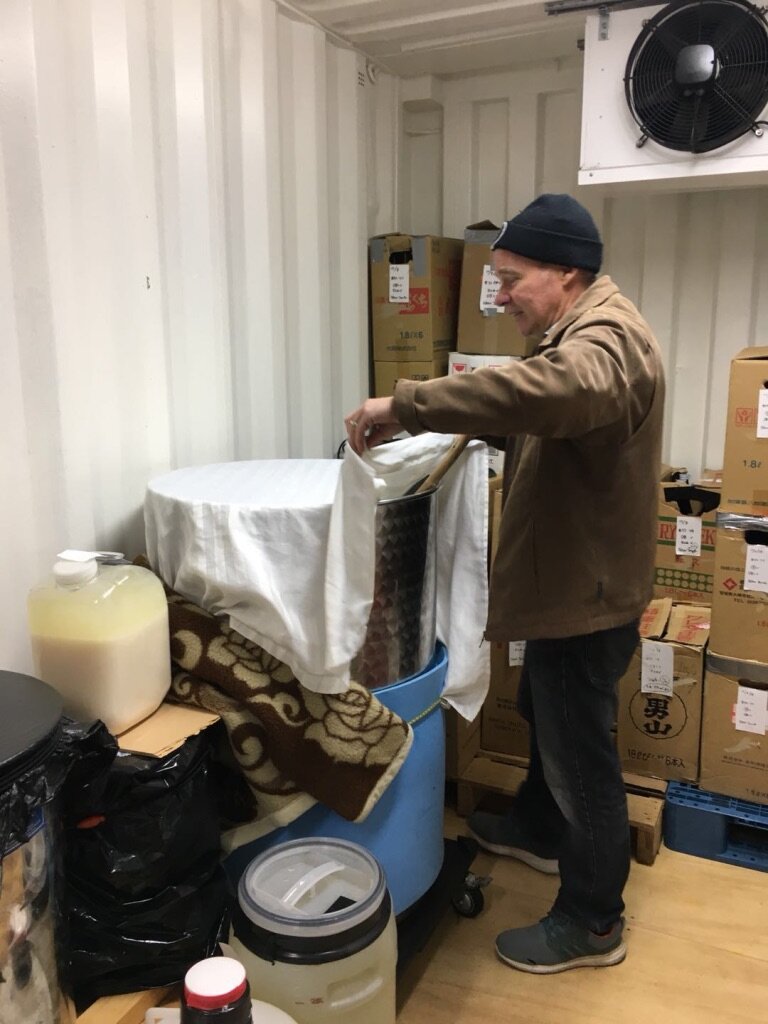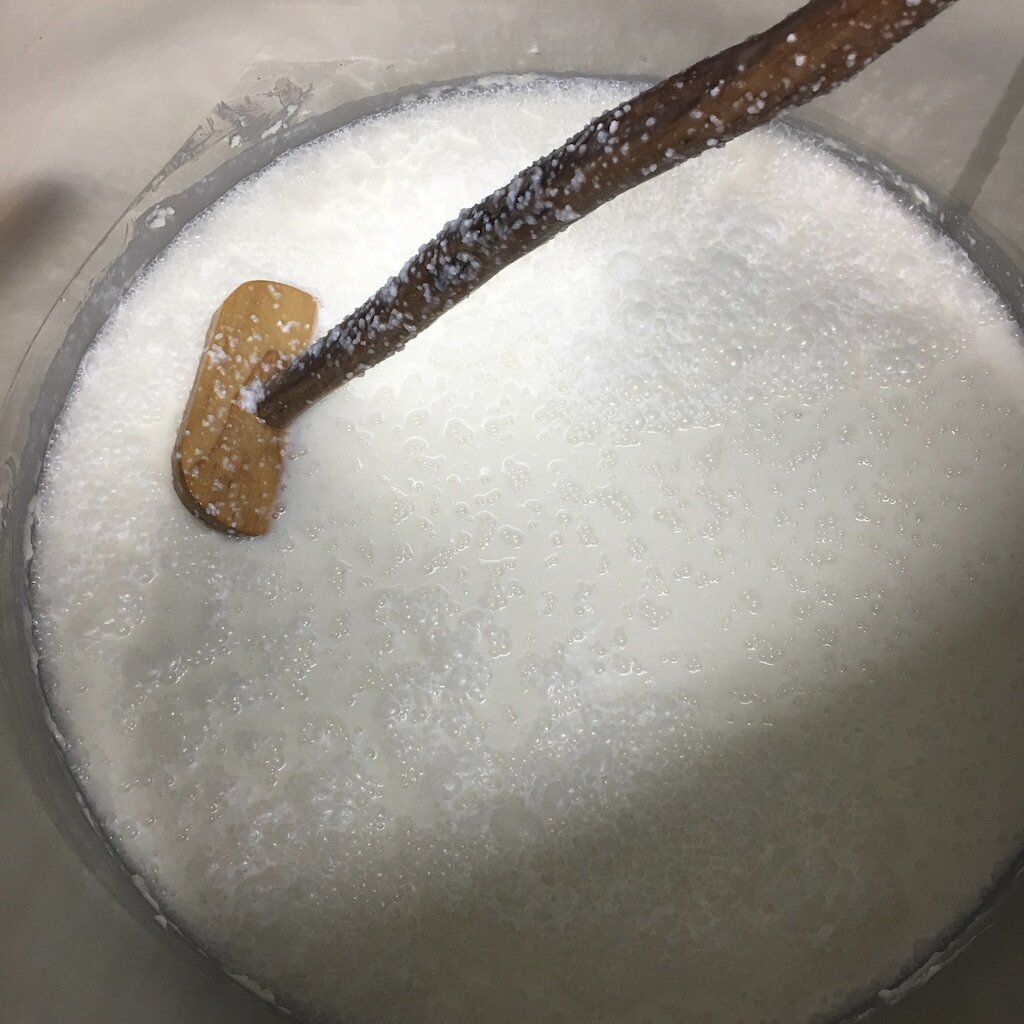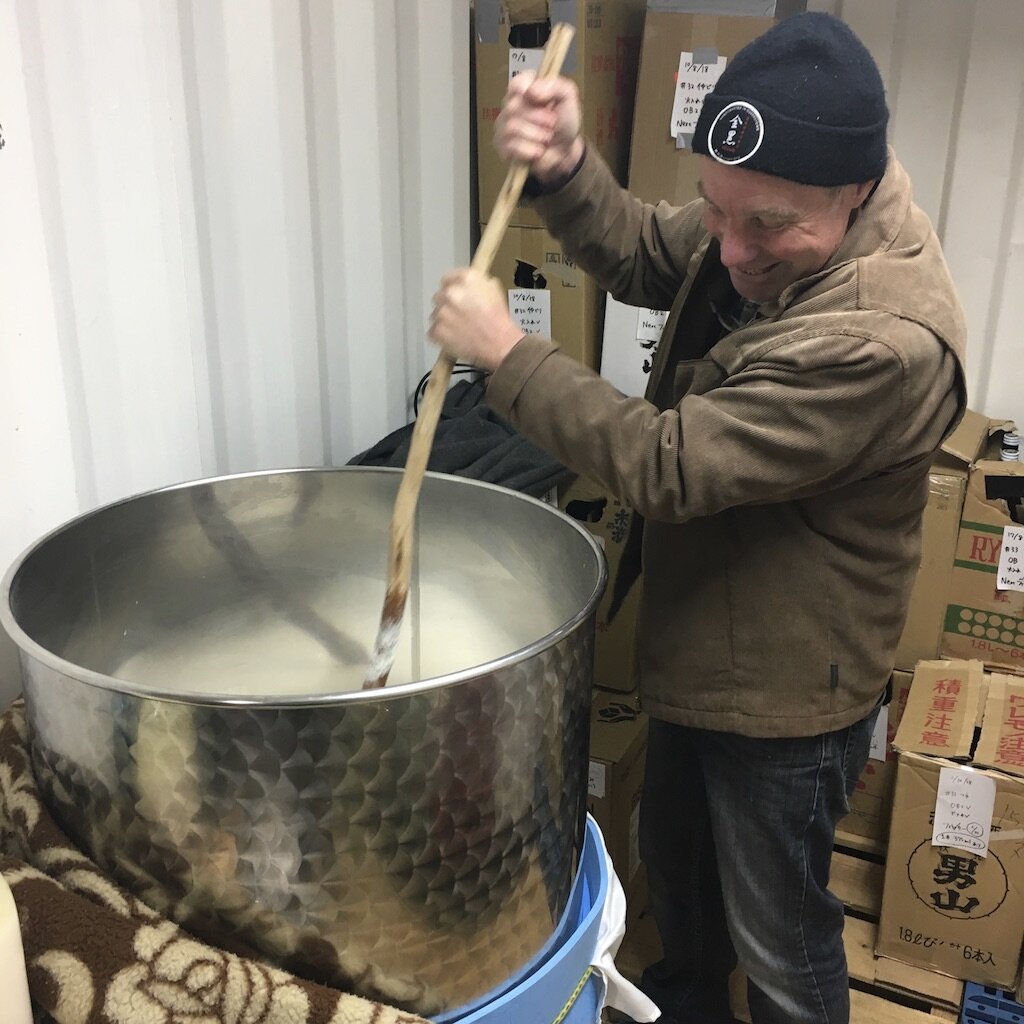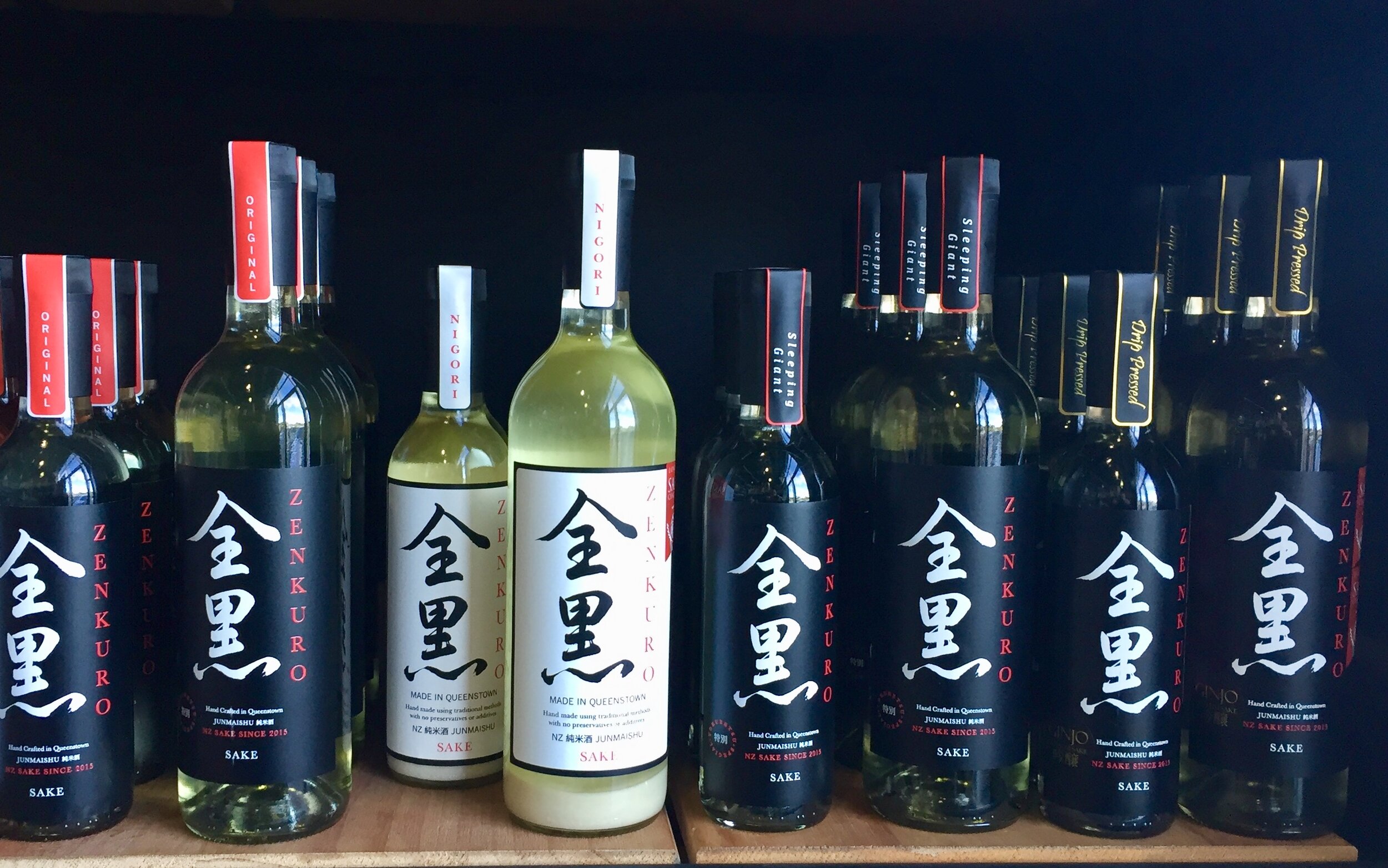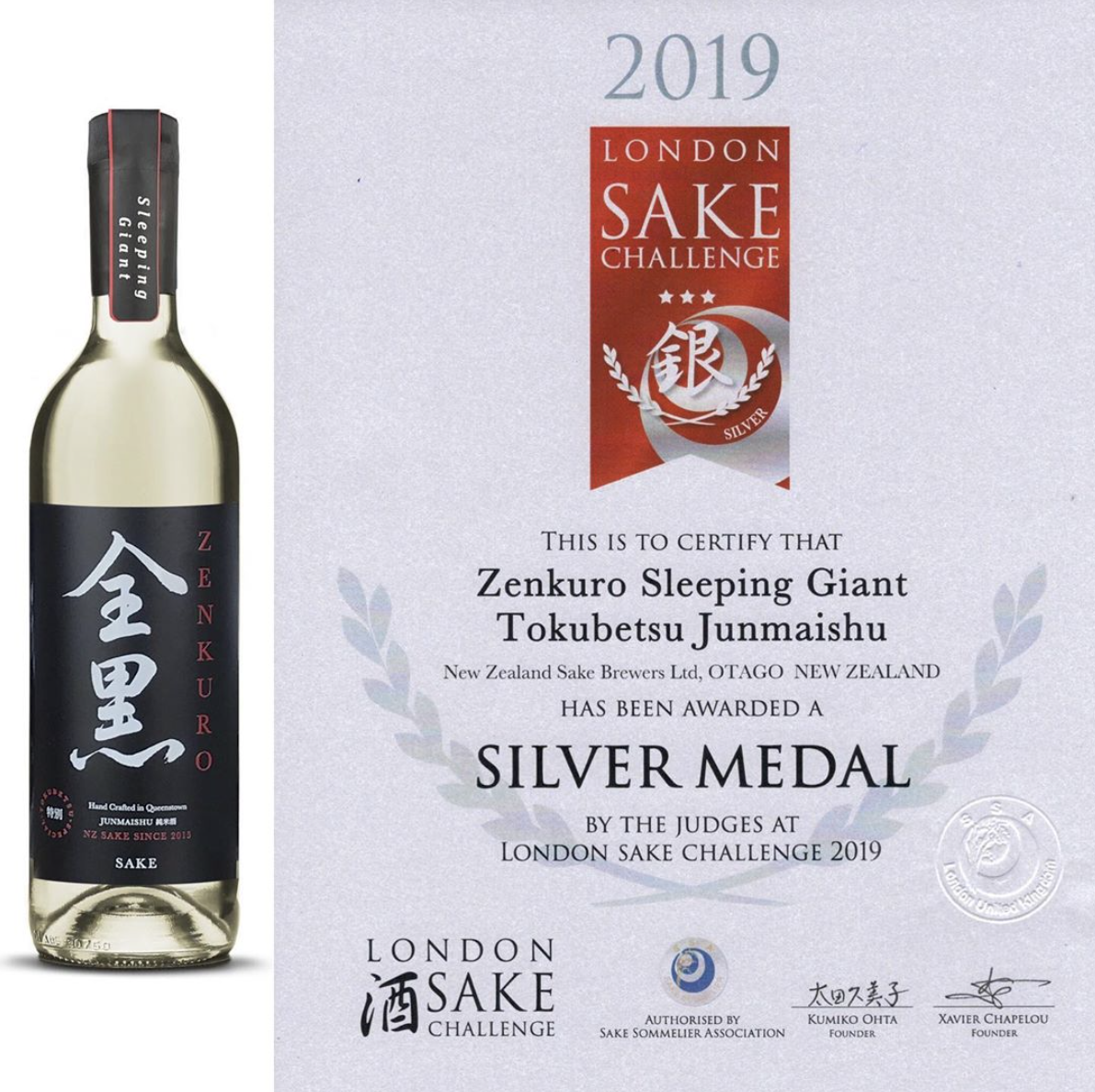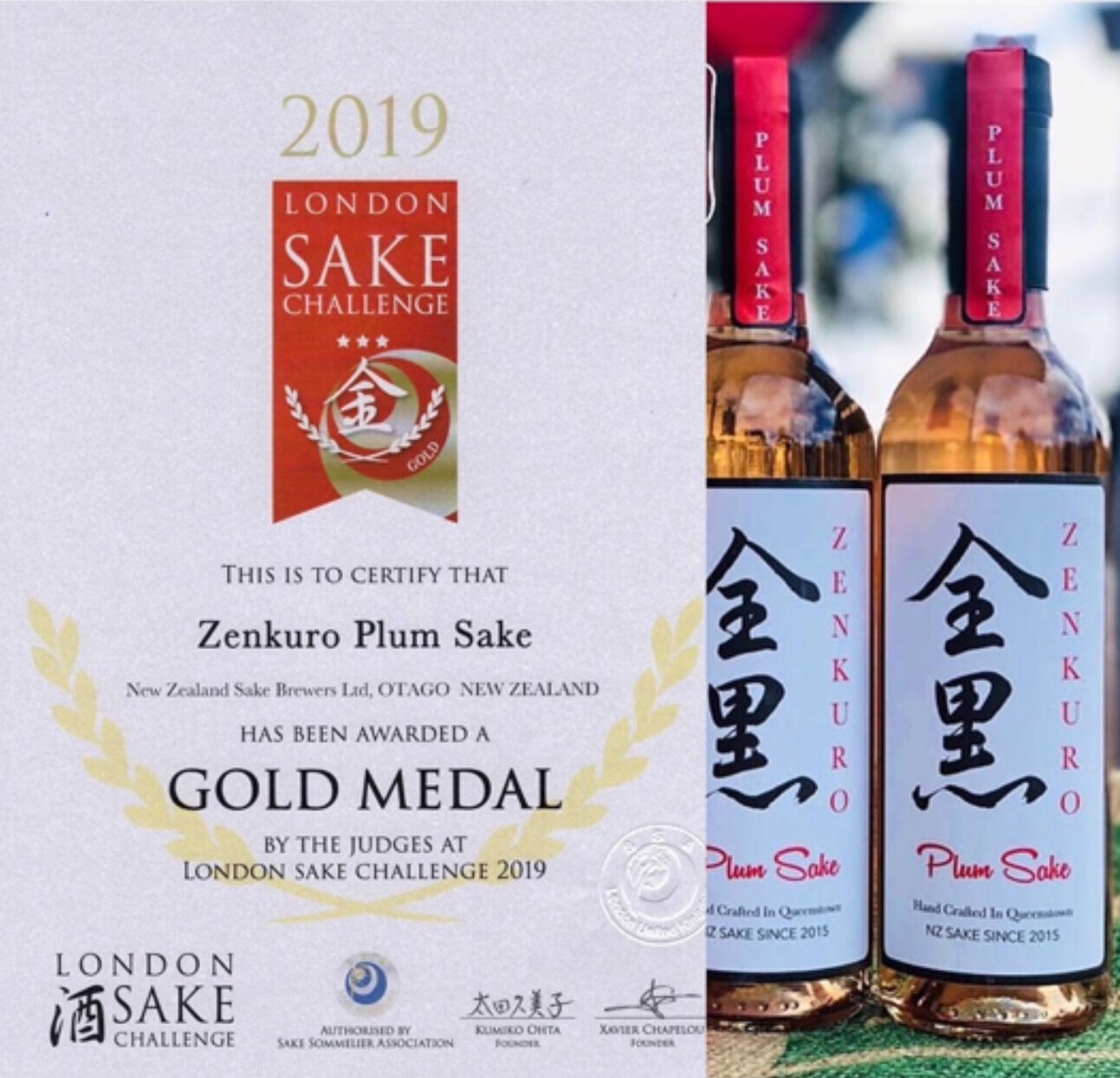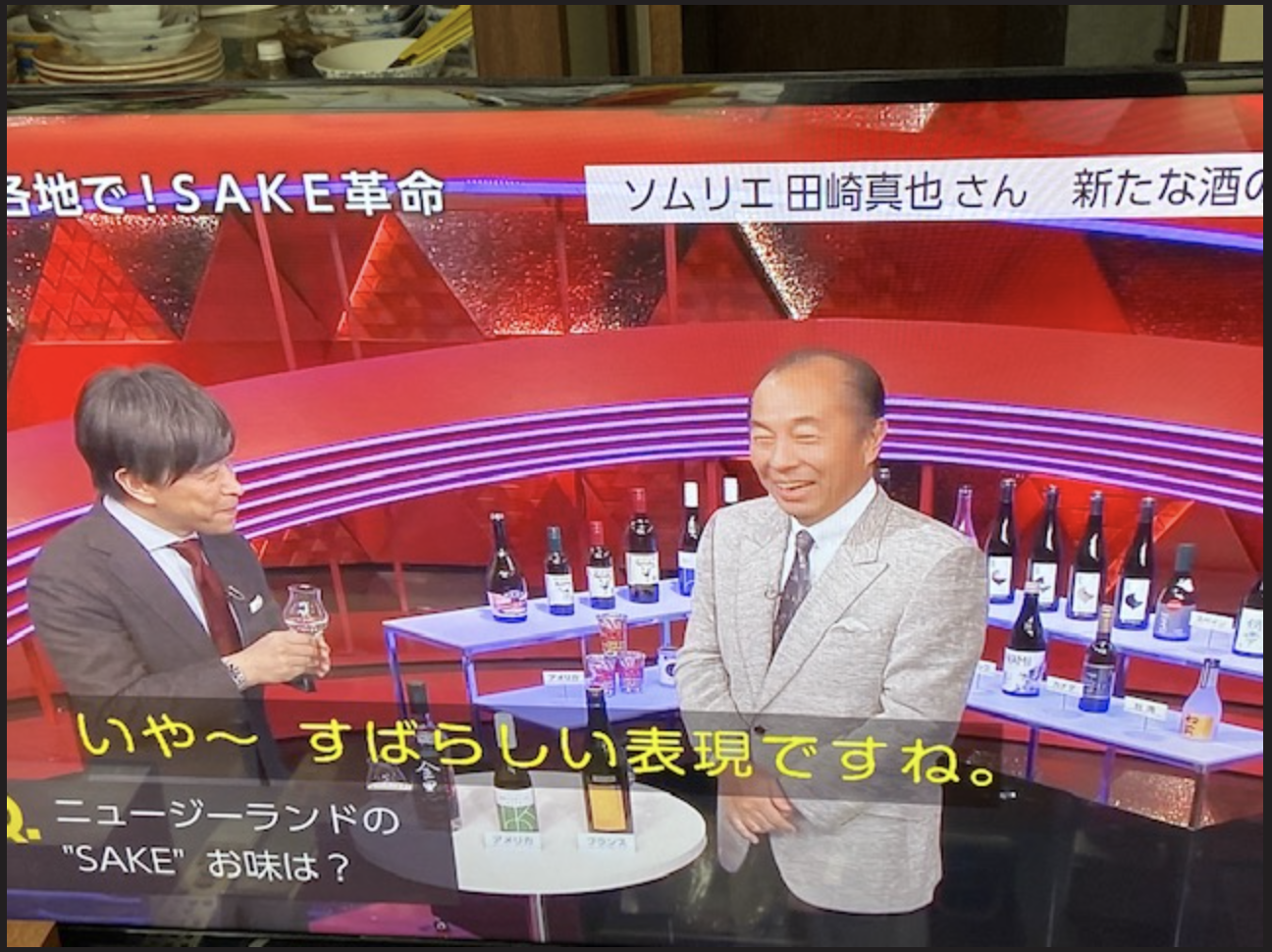THE SAKE KINGS OF QUEENSTOWN
Just over 18 months ago, I had my first taste of Zenkuro Sake, and it became immediately apparent that passion and determination are critical ingredients to making quality Sake into a global phenomenon outside of Japan.
First of all, a quick intro to Zenkuro, although these days the guys are fast gaining media attention, and more importantly Sake followers, from around the world so skip this bit if you wish.
Zenkuro Sake is based in Queenstown and remains New Zealand’s first and only brewery. The 60% polished Gohyakumangoku rice is sourced from Japan, combined with the local soft Southern Alpine waters and fermented using dried koji (also made using 60% milled Gohyakumangoku) created specially for Zenkuro in Tokushima-ken, Japan.
I had emailed Dave Joll, Head Brewer/Director, as part of the planning for our first trip to New Zealand. I entered into the conversation with Zenkuro just thinking that this would be an added bonus to our already crammed out schedule, hoping it would be possible to drop in. But if not, hey, we’re in Central Otago wine country tripping over great places to taste (yet more) Pinot Noir. Lucky for us, even though Dave wasn’t in town that day, a visit was arranged.
Heading past all the bed & breakfasts nestled by Lake Wakatipu, outdoor shops and soon to be heaving bars, we turned into the less idyllic Repco Boulevard and parked up. No sugidama here, no babbling water source for the locals to quench themselves at.
The Zenkuro team has in fact used Covid-19 enforced downtime to smarten up the entrance to the brewery!
But, what Repco Boulevard does have, which no other street in New Zealand has, is that wonderful aroma of fermenting Sake. As Richard Ryall opened the door that October morning and welcomed us in, that first lungful of Sake aroma transported me to any number of Japanese Shuzo, and all the magic therein.
The Zenkuro space was functional back then, and it might well still be now. In many ways quite charming and honest, reflecting the hard work, trials and errors constantly in the mix. Some Japanese paraphernalia gave a nod to the team’s previous lives, hiking and working in Japan, whereas endless hoses, charts, boxes and barrels showed the experimentation at play.
A pile of Otago riverbed rocks were stacked under the sink, ready for use in Zenkuro’s primitive but productive pressing method, and some bundles of sturdy manuka, all very natural. In some ways, I hope it hasn’t changed too much.
At this point Richard granted us access to the inner sanctum, a walk-in refrigerated container, some 750 cubic feet at a guess, within which a moromi stood, shrouded in cloth (a duvet cover actually), until he revealed it in all its frothing glory. Dave stirred with a locally hewn manuka tree limb, adding a little local flavour to the fermentation and I eagerly played Kurabito and had a stir, before we moved on to the tasting.
In 2018, as now, the range is four, but each with readily identifiable personalities:
Zenkuro Original Tokubetsu Junmai – smooth and easy drinking making this a good choice for anyone new to Sake (60% polishing rate)
White Cloud Nigori Junmai – small batch made and lightly filtered, winner of a London Sake Challenge silver medal (60% polishing rate)
Wakatipu Sleeping Giant Tokubetsu Junmai – inspired by the legend of Lake Wakatipu’s sleeping giant Matau, those river rocks are used to create this rich full-bodied Sake, good cold or warm (60% polishing rate). 2019 winner of a London Sake Challenge silver medal
Shizuku Shibori Drip-pressed Junmai Ginjo – drip-pressed through, as I recall, pillowcases, this is the top notch Junmai in the range, and deserved winner of a London Sake Challenge gold medal (60% polishing rate)
There is one addition however, and not just any old bolt on to the range. Zenkuro Plum Sake pulled in a gold medal at last year’s London Sake Challenge. And get this for a feel good sustainable-traceable product - Zenkuro uses plums from their own gardens in Queenstown and Zenkuro Sake-kasu to fertilise the trees organically.
And here’s one to keep an eye out for later this year. Just before lockdown Zenkuro actually brewed their first batch of Junmai Ginjo using a blend of 50% Yamadanishiki (dried koji) and 50% Gohyakumangoku (steamed rice - kakemai) from Japan.
But this isn’t a Sake tasting article. I wanted to check in with Dave and the team again 18 months on, a Rugby World Cup and global pandemic later(ish) to see what was happening, and what’s just around the corner.
Let’s first look back to 2019 and beyond, to the ‘old normal’.
Special Rugby World Cup 2019 labelling
The concept of Zenkuro was born in 2015 whilst watching a game of rugby, so it seems that Japan 2019 was a real milestone to reach for the brewery, Dave told me:
Shinya Tasaki doing his thing
The Rugby World Cup in Japan was a huge high for Zenkuro Sake. With participation in some way one of our founding goals it was very satisfying to succeed at this by having a number of Zenkuro events in Japan. A Zenkuro food pairing party and press conference hosted by the Brewing Association of Japan on the eve of the opening, participation in Sake World Cup in Tokyo on the day of the final, and to have Zenkuro Sake singled out and praised from a full range of overseas Sake by famous sommelier Shinya Tasaki on National TV, were some of the highlights.
Zenkuro had broken into Japan, and export sales since the event carried on right up until March this year when Covid-19 went global. Not wishing to grow too fast too soon, the team’s strategy for 2020 mercifully fell in well with the enforced restrictions of the virus:
Our plan for 2020 was to focus on making the best sake we possibly can and concentrate on spreading sake knowledge within NZ. Covid has helped us do this!
Efficient containment by the New Zealand authorities has meant that the country has weathered the virus comparatively well and emerged from lockdown quite quickly. This has meant Zenkuro’s relationships remain unharmed and plans with domestic restaurants only temporarily frozen.
Perhaps most exciting of all, Zenkuro is expanding the range and meeting customer demand for a Junmai Daiginjo, to be released later this year. Zenkuro have just sent the first small shipment to Sake Connect in Australia, just across The Tasman, and they have been working throughout lockdown on the possibility of exporting to Taiwan.
To be able to deliver the finesse required for a premium Daiginjo Sake in such a short time period is testament to Dave’s knowledge, gleaned from the internship at Yoshikubo Shuzo, Ibaraki Prefecture, as well as time spent in Vancouver with Kasugai-Toji at YK3 and Kanhokuto Shuzo in Fukuoka.
But Zenkuro remains loyal to its local and domestic fans, as Dave explains:
Having a tasting area with food at our Kura where we can take care of visitors, provide Sake education and offer take away sales is part of the five year plan, but for now, keeping Team Zenkuro ticking along as the whole world resets the way they do things will be our immediate goal.
Despite last year’s big achievements and a significant reputation rapidly developing since the boozy idea in 2015, Zenkuro remains realistic and unassuming which reminded me of the interaction I had with Richard when I visited. He gave us well over an hour of his time, and no question remained unanswered.
But there’s no denying a reputation has developed which Melbourne Sake embraced in 2019, learning from a Zenkuro mini-internship, something which Dave referred to:
We wish our very passionate friends at Melbourne Sake every success for their first release very soon. Their food and beverage backgrounds and the fact that they are in the culinary heart of Australia should help them get off to a great start.
Sake Today Issue 13
Returning to my initial impressions of Zenkuro when I was there, I clearly recall it was light on Sake ‘kit’. Most equipment seemed to be from the hardware store, or the kitchen cupboard, and I read in Sake Today the only proper machine is a filter pump to enable final clarification of the Sake.
That must be a reassuring thing to hear for all the small craft Sake breweries embarking on their dreams in 2020. With economies teetering on the brink, Dave’s hard-earned advice seems to resonate more than ever:
You don’t need lots of fancy equipment or lots of money to get started, and don’t worry about sourcing highly milled Sake rice or Sake yeast. Best to hone your skills using cheap ingredients.
You do need to be prepared to give up any time-consuming interests you may have such as golf, fishing, mountain climbing or boating (yes, all interests of mine from a previous life).
Once you start brewing there is no perfect ending, but there is always the hope that one day you’ll find it. Make sure you look after your family and try to not talk too much about Sake at home!
In my opener, I mentioned ‘passion’ and ‘determination’. These attributes I had already scribbled down before recently speaking to Dave. It was obvious from my visit that Zenkuro was all about them. Fame and credibility in the industry have been hard won but are well deserved for team Zenkuro but it remains as focused as ever. These last words from Dave capture that essence and spirit:
It is now a little difficult to know where we are heading in the big Sake world with so much uncertainty caused by Covid. We will have to wait and see like everyone, so for a while it will be important to continue reminding ourselves to think small, hand-made, high quality, no shortcuts and collaboration with friends.
Wise words. Good luck for 2020 (and please add ‘export to Hong Kong’ to this year’s priority list*).
FOOTNOTE:
What does Zenkuro mean? The characters 全 (Zen) means ‘all’ or ‘completely’ and 黒 (Kuro) means ‘black’ – a mix that brings an image of balanced strength, passion, pride and determination to succeed…and of course pays tribute to the legendary All Blacks rugby team of New Zealand.
Take a listen to Dave Joll and Matt Kingsley-Shaw on the captivating Sake On Air podcast (link below). The ins and outs of this refreshing buddying session are there for all to hear across two Sake On Air episodes recoded in January 2020, well worth checking out. The shared joys, friendly rivalries and pure passion for Sake can be clearly felt in these very lively interchanges.
If you’re in the UK Zenkuro is available at Roka Restaurant in Mayfair, London.
*Newsflash, export to Hong Kong is indeed on Dave’s radar, awesome!
QUICK GLOSSARY:
Sugidama: A ball of Japanese Cedar tree branches (often artificial) hung outside of Sake breweries at the start of the brewing season. The (natural) needles change colour from green to brown as the brewing season progresses marking the progress of Sake production
Koji: Rice that has been inoculated with Koji-kin mold
Shuzo: Sake brewery. Often added to the company name e.g. Morikawa Shuzo
Moromi: The main fermenting ‘mash’, comprised of a mixture of yeast starter, koji, steamed rice and water
Kurabito: Literally ‘brewery rat’, a Sake brewery worker
Tokubetsu 特別: Simply means “special” and identifies that a special production process was applied to a Junmai or Honjozo category Sake. More often than not it designates that a lower rice polishing rate than required took place
Junmai: Sakes made with no added alcohol are Junmai, the only ingredients are rice, water and Koji mould
Nigori 濁り: “Cloudy” or “milky” Sake that has some of the original rice solids from fermentation remaining in the liquid. Body can vary from simple opaque through to quite thick and porridge-like. Brewers achieve this by running the Sake through a coarser filter or by adding the rice back in after filtration. Note that Japanese law stipulates that all true Sake must be filtered
Sake-kasu: The residual rice solids (like “lees” in wine) from when the Sake is separated from the main fermentation through pressing
Ginjo 吟醸: Sake made from rice at a polishing ratio below 60% and Daiginjo大吟醸: Sake made from rice at a polishing ratio below 50%
Kura: Sake brewery
LINKS:
Zenkuro Sake
www.zenkuro.co.nz
@zenkurosake
027 4677034
info@zenkuro.co.nz
Melbourne Sake
www.melbournesake.com.au
Sake Today
www.saketoday.com
Sake On Air
www.sakeonair.com/2020/03/27/building-breweries-down-under-with-zenkuro-melbourne-sake/
